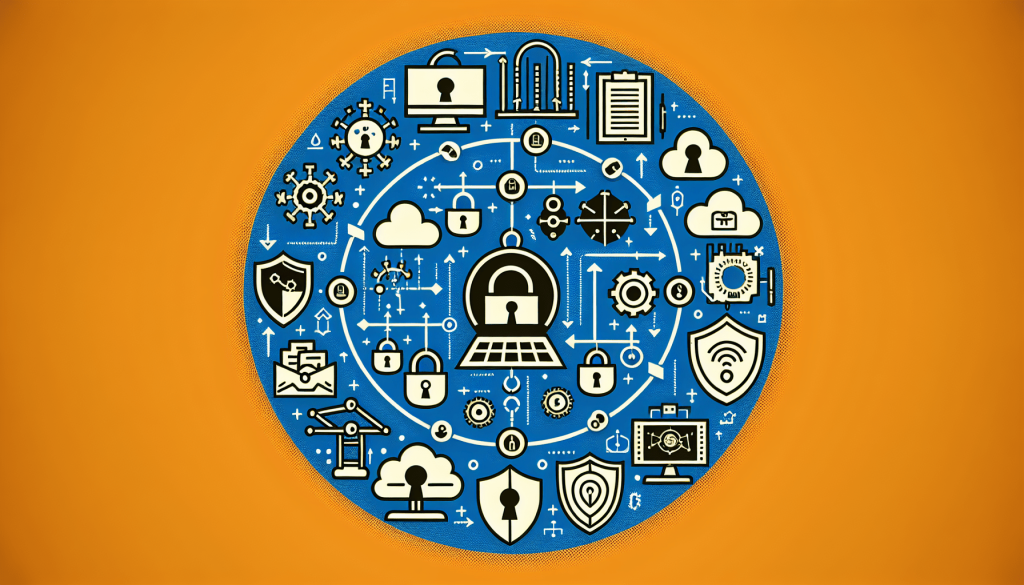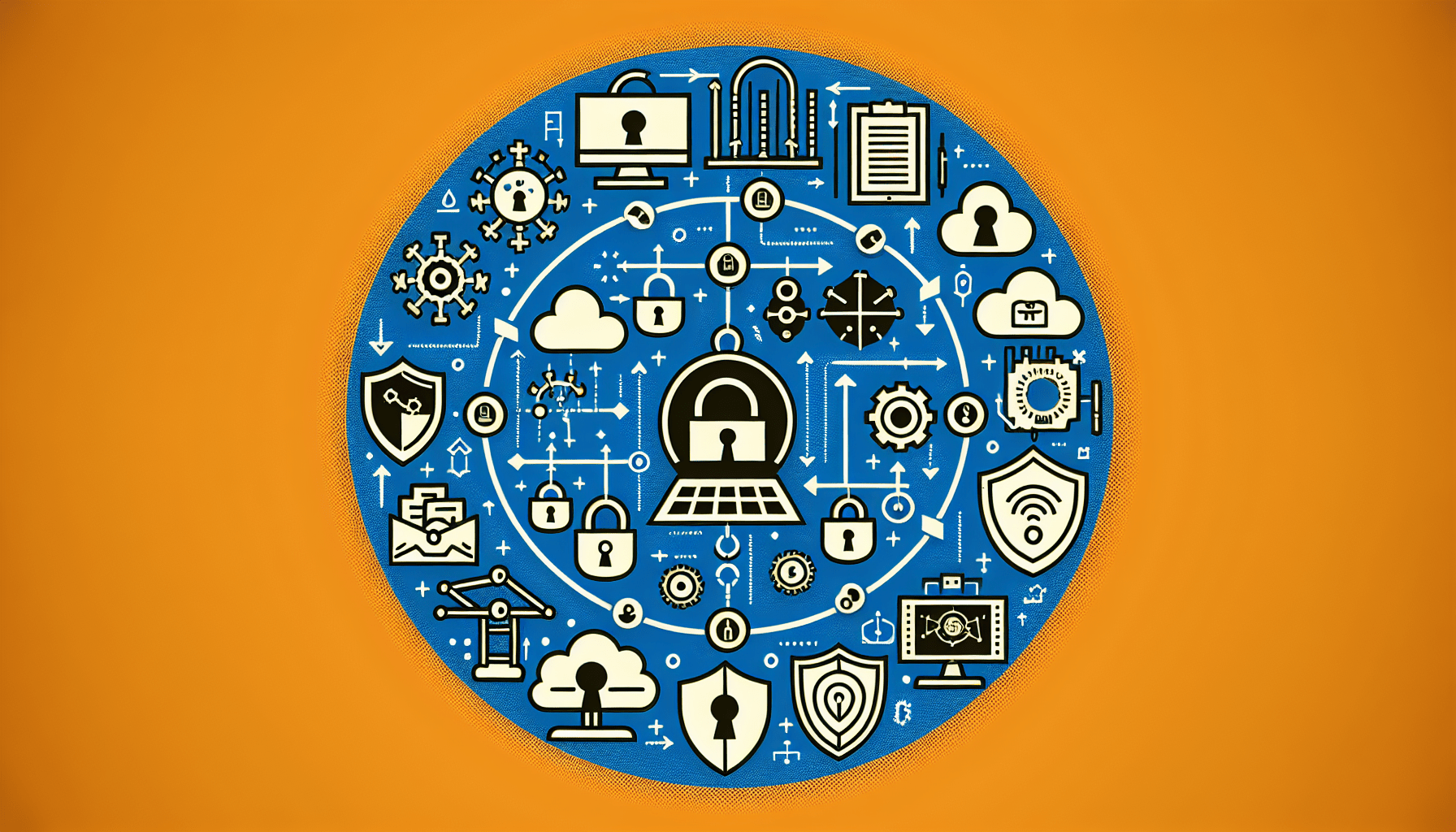In this article, you will discover the essential steps to create a strong and reliable network security plan for your business. Whether you are a small start-up or a large enterprise, safeguarding your network from potential threats is vital in today’s digital world. By following these simple yet effective steps, you can gain peace of mind knowing that your business data and sensitive information are protected from cyber-attacks. So, let’s dive in and explore the key components of a robust network security plan that will keep your business safe and secure.
10 Steps to Create a Robust Network Security Plan for Your Business
Network security is of utmost importance in today’s digital world, where cyber threats are becoming increasingly sophisticated. As a business owner, it is crucial to have a comprehensive network security plan in place to protect your valuable data and ensure the smooth functioning of your business operations. Follow these 10 steps to create a robust network security plan for your business.

1. Assess Your Current Network Infrastructure
Before you can create an effective network security plan, it is essential to assess your current network infrastructure. Identify all the devices and systems connected to your network, including computers, servers, routers, and other networking equipment. This step will give you a clear understanding of your network architecture.
Evaluate the security measures already in place, such as firewalls, antivirus software, and encryption protocols. It is important to determine whether these measures meet your business’s security requirements or if they need to be updated or replaced.
While evaluating your network infrastructure, also identify vulnerabilities and weaknesses in your current network. This analysis will help you understand the potential areas of risk and guide you in strengthening your network security.
2. Define Your Network Security Goals and Objectives
To create an effective network security plan, you must have clear goals and objectives. Understand the specific security requirements for your business. Consider the nature of your business, the sensitivity of the data you handle, and any legal or regulatory compliance requirements.
Set clear goals and objectives for your network security plan based on your business’s unique needs. For example, your goals might include protecting customer data, preventing unauthorized access, and ensuring the availability and reliability of your network. Align these goals with your overall business objectives to ensure they support your growth and success.
3. Identify Potential Threats and Risks
To develop a robust network security plan, you need to identify potential threats and risks that can compromise the security of your network. Familiarize yourself with common cybersecurity threats such as malware, phishing attacks, ransomware, and social engineering.
Assess the potential impact of these threats on your business. Consider the financial and reputational damage that could result from a successful cyber attack. Additionally, take into account industry-specific regulations and compliance requirements that may affect your network security.
Understanding the potential threats and risks will enable you to develop targeted strategies to mitigate these risks effectively.
4. Implement Strong Authentication Measures
Securing user access to your network is critical to maintaining network security. Implement strong authentication measures to prevent unauthorized access to your network devices and systems.
Use unique usernames and strong passwords for all network devices. Encourage employees to create complex passwords that include a combination of uppercase and lowercase letters, numbers, and symbols. Regularly update passwords to minimize the risk of password-based attacks.
Enable two-factor authentication (2FA) for additional security. With 2FA, users are required to provide a second form of verification, such as a code sent to their mobile device, along with their username and password. This provides an extra layer of protection against unauthorized access.
Implement password policies that enforce password complexity, expiration periods, and restrictions on password reuse. Regularly educate employees about the importance of strong authentication measures and the role they play in maintaining network security.
5. Establish Network Access Controls
Controlling access to your network is crucial for maintaining network security. Implement role-based access control (RBAC) to limit user privileges. Assign specific access rights to users based on their job responsibilities and the principle of least privilege.
By implementing RBAC, you ensure that users have access only to the resources necessary for their role, minimizing the risk of unauthorized actions and accidental data breaches. Regularly review and update access rights to adapt to organizational changes and ensure ongoing security.
Enable network segmentation to isolate sensitive data and restrict access to critical resources. Segmenting your network can help contain potential breaches and limit the compromise of sensitive information.
Monitor and log user activity to detect and investigate any suspicious behavior. By keeping a record of user actions, you can identify potential security incidents and take appropriate action in a timely manner.
6. Deploy Firewalls and Intrusion Detection Systems
Firewalls are a crucial component of network security. They act as a barrier between your internal network and external threats, filtering incoming and outgoing network traffic. Install and configure firewalls to minimize the risk of unauthorized access and protect your network from malicious attacks.
Alongside firewalls, deploy intrusion detection and prevention systems (IDPS). These systems monitor network traffic for signs of potentially malicious activity, such as unauthorized attempts to access your network or suspicious patterns of data transfer.
To ensure the effectiveness of firewalls and IDPS, regularly update and patch them to protect against emerging threats. Stay vigilant about the latest security vulnerabilities and apply necessary updates promptly.
7. Educate and Train Employees on Network Security
Your employees play a vital role in network security. Educate and train them on network security best practices to create a culture of security awareness and accountability.
Provide regular cybersecurity awareness training to all employees, keeping them informed about the latest threats and teaching them how to spot and report potential security incidents.
Teach employees best practices for creating strong passwords, recognizing phishing attempts, and following secure browsing habits. Emphasize the importance of adhering to security policies and procedures to protect your network.
Encourage employees to report any suspicious activity or security incidents promptly. Foster an environment where employees feel comfortable raising concerns and taking an active role in maintaining network security.
8. Implement Network Monitoring and Incident Response
Network monitoring is crucial for detecting and responding to potential security incidents promptly. Deploy network monitoring tools to continuously monitor network traffic and identify any abnormal or malicious activity.
Establish an incident response plan that outlines clear procedures and roles in the event of a security incident. This plan should include steps to isolate affected systems, investigate the incident, notify relevant parties, and restore normal network functionality.
Regularly test and refine your incident response plan to ensure its effectiveness and readiness. Conduct mock drills and simulations to prepare your team to handle security incidents efficiently.
9. Regularly Update and Patch All Systems
Keeping your network devices and systems up to date with the latest software updates and security patches is crucial for network security.
Regularly install software updates and security patches on all network devices, including computers, servers, routers, and other networking equipment. These updates often address known vulnerabilities and security issues, closing potential entry points for cyber attackers.
Keep your antivirus and anti-malware software up to date to protect against the latest threats. These software solutions play a critical role in identifying and preventing malicious activities on your network.
Perform regular vulnerability assessments and penetration testing to identify any weaknesses in your network. These assessments help you proactively address vulnerabilities and minimize the risk of a successful cyber attack.
10. Backup and Disaster Recovery Planning
Data loss can severely impact your business’s operations and reputation. Implement regular data backups to protect against potential data loss due to security incidents, hardware failures, or natural disasters.
Establish a comprehensive disaster recovery plan that outlines the steps to quickly restore network functionality in the event of a disruption. Regularly test and validate your backup and recovery processes to ensure their effectiveness and reliability.
Conclusion:
Creating a robust network security plan is essential for any business operating in today’s digital landscape. By following these 10 steps, you can strengthen your network security and protect your valuable data. Assess your current network infrastructure, define your security goals, identify potential threats, implement strong authentication measures, establish network access controls, deploy firewalls and IDS, educate and train employees, implement network monitoring and incident response, regularly update and patch systems, and finally, backup and plan for disaster recovery. With a comprehensive network security plan in place, you can safeguard your business from cyber threats and ensure the uninterrupted flow of operations.
